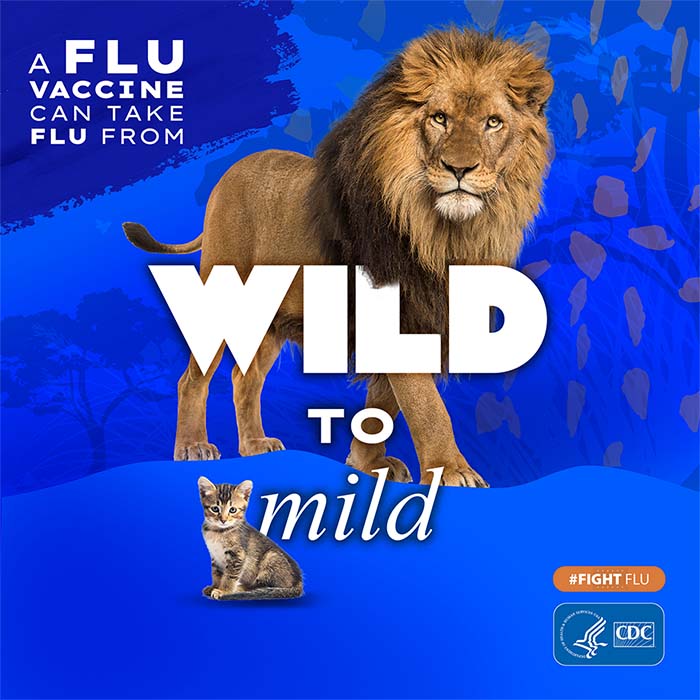Flu Activity Increasing Late in the Season
Vaccination now could still be beneficial per CDC
March 18, 2022—CDC’s most recent FluView report shows that flu activity is increasing across most of the United States after declining from mid-December through January. Currently, activity is highest and increasing fastest in the central and south-central parts of the country. This is an unusual time for flu activity to be increasing, and it is unclear how long increases will continue. Flu activity is hard to predict, and CDC believes that flu vaccination at this time could still be beneficial for people who have not yet been vaccinated. While preliminary vaccine effectiveness estimates suggest that this season’s vaccines have not reduced the risk of mild to moderate illness caused by the most common H3N2 viruses, vaccination has been shown in the past to offer protection against more serious outcomes in people who get vaccinated but still get sick. Vaccination also could protect against illness caused by other flu viruses if those begin to circulate more commonly later this season.
According to CDC’s surveillance systems, the proportion of respiratory specimens testing positive for flu in clinical laboratories nationally has increased for six weeks. Nationally almost 7 percent of respiratory specimens tested at clinical labs were positive for flu during the week ending March 12, 2022, but this proportion varied across the country with highest proportions occurring in the central and south-central parts of the country and the lowest proportions occurring in the Pacific northwest and southeast. Additionally, the number of flu-related hospital admissions reported nationally to HHS-Protect increased for the sixth week in a row. More than 2,000 people were hospitalized with flu nationally during the week ending March 12, 2022. This week CDC also reported an additional three flu-related pediatric deaths, bringing the total this season to 13.
CDC continues to recommend flu vaccination as long as flu viruses are circulating and even when protection against one virus is reduced. Flu vaccines protect against four different flu viruses and vaccination could still prevent serious outcomes in people who are vaccinated but still get sick. While preliminary vaccine effectiveness estimates suggest that this season’s vaccine did not reduce the risk of getting sick and needing outpatient medical care from H3N2 flu, there is a growing body of evidence suggesting that flu vaccination attenuates severe illness, even when the circulating viruses have antigenic differences from the vaccine virus. The evidence is particularly strong in young children who are at increased risk for severe complications from flu. A study during the 2019-2020 flu season showed that during a season when there were antigenic differences between the vaccine and circulating viruses, vaccination was associated with a reduced risk of critical and life-threatening flu illness in children. The results of studies looking at how well this season’s flu vaccines are working at preventing serious outcomes this season are still to come.
Given the reduced vaccine effectiveness against the most common flu viruses causing infection now and the later than usual increases in circulation of flu, antiviral drugs for treatment are even more important. Clinicians should promptly treat people who have flu or suspected flu who are at higher risk of serious flu complications. While flu vaccination is the first and best way to prevent flu, antiviral drugs are a second line of defense that can be used to treat flu. When used for treatment, antiviral drugs can lessen symptoms and shorten the time you are sick by 1 or 2 days. They also can prevent serious flu complications, like pneumonia. For people at higher risk of serious flu complications, treatment with antiviral drugs can mean the difference between milder or more serious illness possibly resulting in a hospital stay.
In addition to vaccination and the appropriate use of flu antiviral medications, CDC recommends everyday preventive actions to reduce the spread of respiratory illness like flu. These everyday preventive actions include staying home when sick, covering coughs and sneezes, and washing your hands often.
